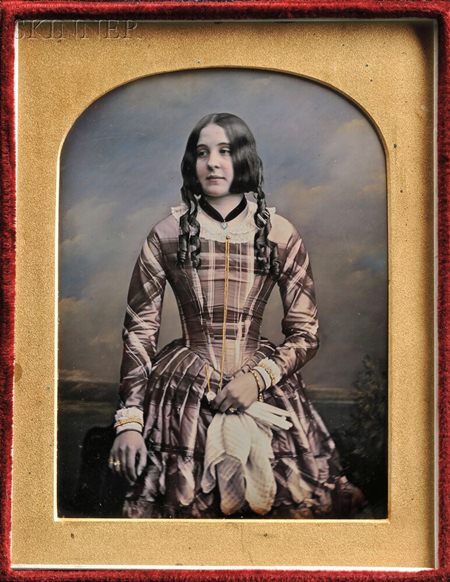
Many historians believe that Louis Jacques Mande Daguerre was the driving force in photography in the 1830’s resulting in the eponymous Daguerreotype in 1837. However, he was not the ‘inventor’ of photography; that was Joseph Nicéphore Niépce who had managed to produce some images. Daguerre by that stage did not have even one image to his credit. It could be said that Daguerre “stole” the technology, even though neither Niepce nor Daguerre could produce an image that would “stay”. Consequently, the biggest problem Daguerre (and others) had to overcome initially, was how to “fix” the image.
Daguerre was French (died July 10, 1851, Bry-sur-Marne), and has been described as a painter and physicist who invented the first practical process of photography, known as the daguerreotype. Though this is not quite correct. The first permanent photograph from nature was made in 1826/27 by Nicéphore Niépce of France, but it was of poor quality and required about eight hours’ exposure time. The process that Daguerre developed much later required only 20 to 30 minutes.
Daguerre had an interesting life and was at first an inland revenue officer and then a scene painter for the opera. In 1822 at Paris he opened the Diorama, an exhibition of pictorial views, with various effects induced by changes in the lighting. A similar establishment that he opened in Regent’s Park, London, was destroyed by fire in 1839. These were interesting in that the Diorama was very similar to the Camera Obscura, which again was not from Daguerre’s technology, as the Camera Obscura dates back to around 500 BCE.
Niépce, who since 1814 had been attempting to obtain permanent pictures by the action of sunlight, learned in 1826 of Daguerre’s efforts in the same field. The two became partners in the development of Niépce’s heliographic process from 1829 until the death of Niépce in 1833, and Daguerre was still without definitive ‘photographic’ results.
Daguerre continued his experiments, and it was he who discovered that exposing an iodized silver plate in a camera would result in a lasting image if the latent image on the plate was developed by exposure to fumes of mercury and then fixed (made permanent) by a solution of common salt. On January 9, 1839, a full description of his daguerreotype process was announced at a meeting of the Academy of Sciences by the eminent astronomer and physicist François Arago. Daguerre was appointed an officer of the Legion of Honour. In 1839 Daguerre and the heir of Niépce were assigned annuities of 6,000 francs and 4,000 francs, respectively, in return for their photographic process, which France could rightly claim.
This time Daguerre struck it lucky when Richard Beard bought the British daguerreotype patent from Miles Berry in 1841 and closely controlled his investment, selling licenses throughout the country and prosecuting infringers.
Daguerreotype photography spread rapidly across the United States after the discovery first appeared in US newspapers in February 1839.
It is possible that Morse may have been the first American to view a daguerreotype first-hand. Morse’s experience with art and technology in the early 1800’s attracted him to the daguerreotype. In his piece The Gallery of the Louvre Morse used a Camera Obscura to precisely capture the gallery which he then used to create the final painting.
Morse met Louis-Jacques-Mande Daguerre, in Paris in January 1839 when Daguerre’s invention was announced. While the daguerreotype fascinated Morse, he was concerned about how the new invention would compete with his telegraph. However, Morse’s viewing of the daguerreotype alleviated his fears when he saw how revolutionary its technology was.
In the 1830’s, there was much intrigue in obtaining patent rights, and Daguerre did well out of it, plus his French government pension.
 |
 |
 |





